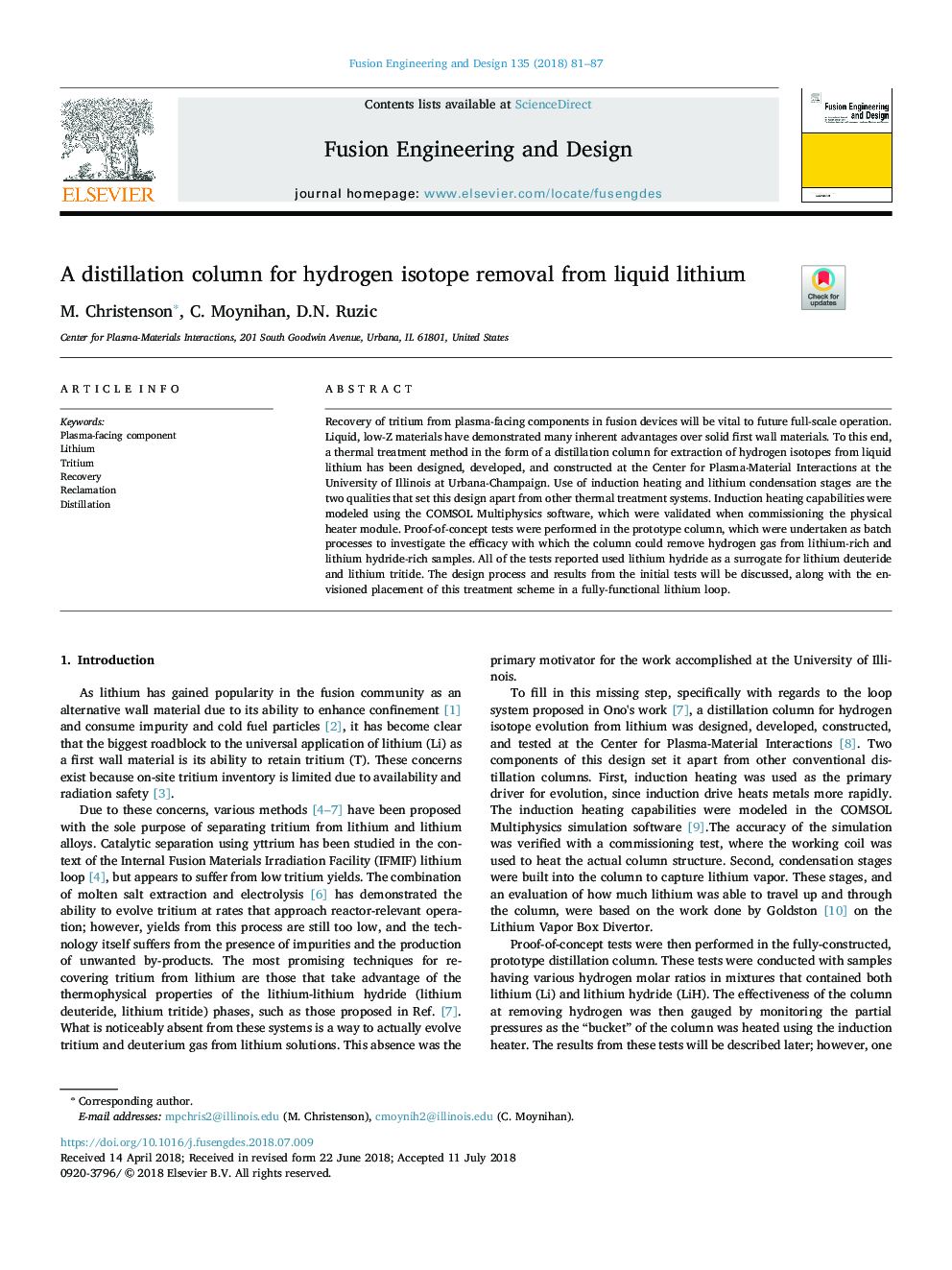| Article ID | Journal | Published Year | Pages | File Type |
|---|---|---|---|---|
| 6742718 | Fusion Engineering and Design | 2018 | 7 Pages |
Abstract
Recovery of tritium from plasma-facing components in fusion devices will be vital to future full-scale operation. Liquid, low-Z materials have demonstrated many inherent advantages over solid first wall materials. To this end, a thermal treatment method in the form of a distillation column for extraction of hydrogen isotopes from liquid lithium has been designed, developed, and constructed at the Center for Plasma-Material Interactions at the University of Illinois at Urbana-Champaign. Use of induction heating and lithium condensation stages are the two qualities that set this design apart from other thermal treatment systems. Induction heating capabilities were modeled using the COMSOL Multiphysics software, which were validated when commissioning the physical heater module. Proof-of-concept tests were performed in the prototype column, which were undertaken as batch processes to investigate the efficacy with which the column could remove hydrogen gas from lithium-rich and lithium hydride-rich samples. All of the tests reported used lithium hydride as a surrogate for lithium deuteride and lithium tritide. The design process and results from the initial tests will be discussed, along with the envisioned placement of this treatment scheme in a fully-functional lithium loop.
Related Topics
Physical Sciences and Engineering
Energy
Energy Engineering and Power Technology
Authors
M. Christenson, C. Moynihan, D.N. Ruzic,
